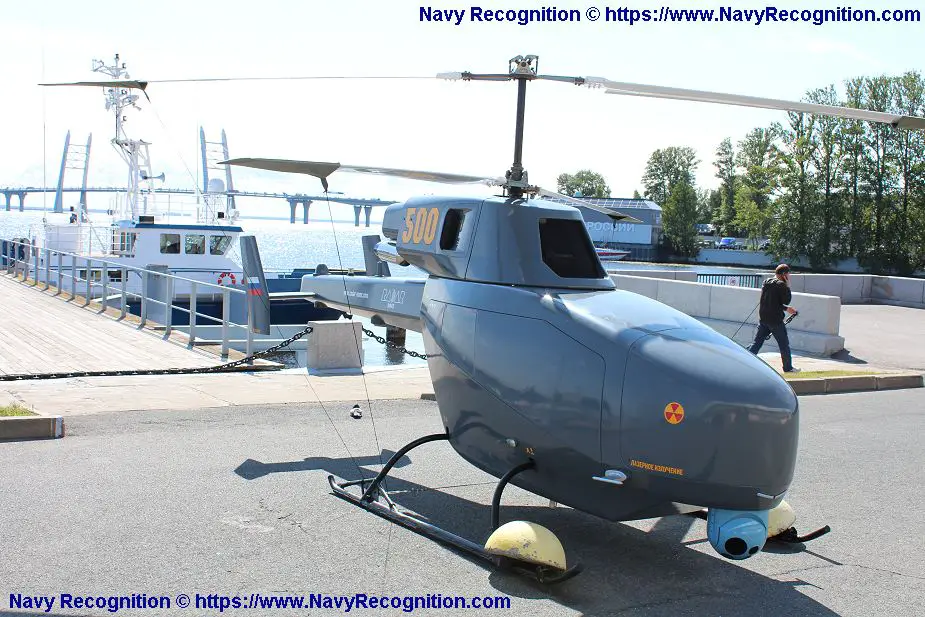The Russian company Radar MMS, specialized in high-tech equipment displays its BVS VT 500 also called BPV-500, a new co-axial rotors helicopter drone at IMDS 2019, the International Maritime Defence Exhibition which takes place in Saint Petersburg, Russia. according to the manufacturer, the BPV-500 is designed to operate from land vehicles and naval vessels and is able to perform a full range of missions.
The Russian company Radar MMS, specialized in high-tech equipment displays its BVS VT 500 also called BPV-500, a new co-axial rotors helicopter drone at IMDS 2019, the International Maritime Defence Exhibition which takes place in Saint Petersburg, Russia. according to the manufacturer, the BPV-500 is designed to operate from land vehicles and naval vessels and is able to perform a full range of missions.
 Radar-MMS 500 co-axial rotors helicopter drone at IMDS 2019, the International Maritime Defence Exhibition in Saint Petersburg, Russia. June 11, 2019. (Picture source Navy Recognition)
Radar-MMS 500 co-axial rotors helicopter drone at IMDS 2019, the International Maritime Defence Exhibition in Saint Petersburg, Russia. June 11, 2019. (Picture source Navy Recognition)
The design of the BPV-500 is very similar to a standard helicopter but fitted with two rotors discs mounted on the top of the drone. Russia has already developed combat helicopters using the same design for the rotors as the Kamov Ka-50. The use of a contra-rotating co-axial rotor system removes the need for the entire tail rotor assembly and improves the aircraft's aerobatic qualities.
The BPV-500 has an endurance 5.5 hours, a ceiling of 11,482 ft, a maximum speed of 155 km/h, and a range of 320 km. It has a maximum take-off weight of 500 kg and a payload capacity of 150 kg. It can operate with varying levels of autonomy, including pre-programmed missions.
The fuselage of the BVP-500 has a length of 4.7m, a width of 1,6m and a height of 2.6m. For the naval version of the BPV-50, the blades can be folded.
The whole system of the BPV-500 includes a single drone and the ground control elements that include two work stations, communications equipment, and a set of payloads for the aircraft. All the control equipment of the BPV-500 can be transported on board a naval vessel or mounted on tracked or wheeled combat vehicles.







